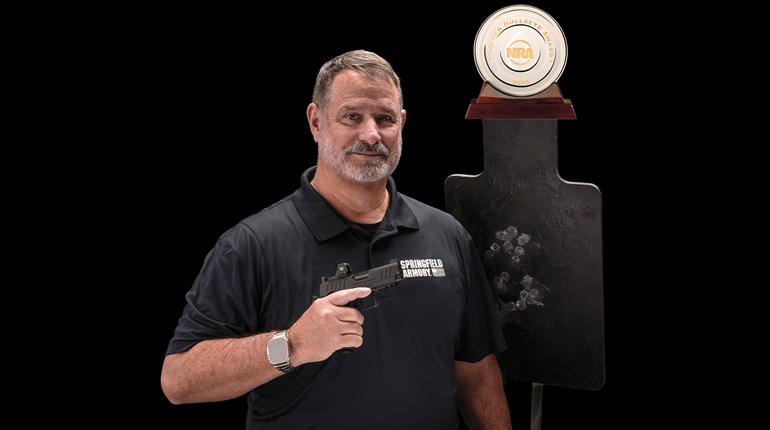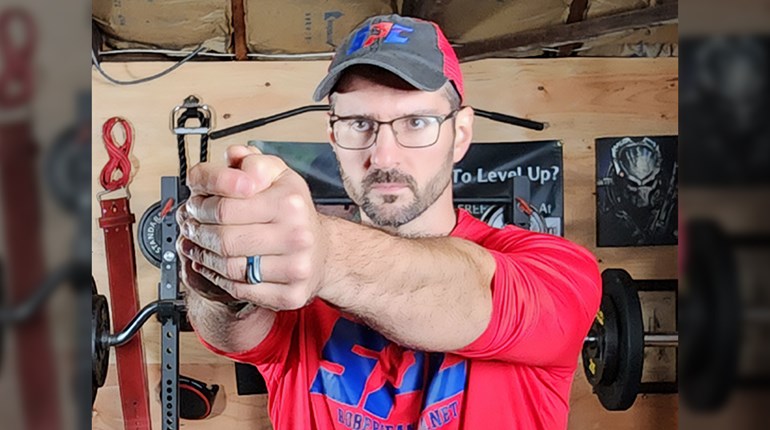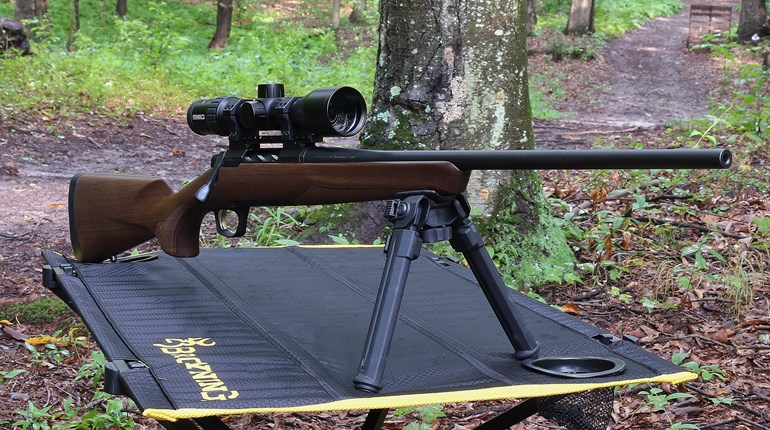
Lots of folks are thinking self-improvement this time of year, and we’re no exception. It takes persistence to follow through with only ourselves as the task master, and the same holds true for our shooting. With this in mind, consider adding some formal “quals” to the exercise of your Second Amendment prerogatives.
This shorthand is borrowed from our military and law-enforcement friends: “Quals” are short for “qualification” courses of fire. We think there’s a tendency to sell these training and grading exercises short when it comes to civilian skills development, and that’s a mistake for several reasons.
Many shooters and non-shooters alike assume that civilians aren’t up to even the lowest of military/LE standards, but this is often (and sometimes spectacularly) untrue. The negatives of this perception can compound: The “antis” plow, seed and harvest this ground regularly to justify ever-more-egregious predation on firearms rights, and shooters use it to lackadaisically do what is fun, rather than what is productive. Preventing the first demands attention to the second. We won’t break down this deeply prejudiced stereotype overnight, but shying away from the mechanisms that can offer apples-to-apples comparison is no help.
Another rationale is obvious to anyone who has ever taught anything under circumstances where actual learning performance is measured: Students will shirk what they’re bad at, almost without exception.
Most quals are designed to short-circuit this natural (and to some extent, perhaps unconscious) tendency. Bedrock skills and shortcomings generally scream at you from a qualification course of fire, and rocking the former can rarely altogether hide tanking the latter. It may be an assault on your pride, but revealed truth is worth it if you’re serious about being truly, perhaps life-savingly, competent. Which, of course, you should be—our fun can become very serious business in a twinkling.
If you’re a long arm fan, here’s a good one we’ve suggested before—the U.S. Navy “Short” qualification course. Starting at the 50-yard line with a silhouette target, shoot five rounds to bolt lock/empty, reload, drop to kneeling, shoot five to bolt lock/empty again, reload, drop to prone and shoot the final five rounds. To score, start at zero, and add five for every non-A hit, and two for every second over 25 (minus one for every second under 25, you over-acheivers). Firearms must be safed between position changes, or a plus two procedural applies.

40 is a pass (“marksman”), sub-24 a “sharpshooter,” and sub-9 an “expert.”
Friend of A1F and retired U.S. Navy SEAL Jeff Gonzales recommended this to us a while back, and (unsurprisingly) he was dead right: It seems like a pure speed drill, but it will develop your rifle/carbine accuracy skills—or penalize their lack—too. We like the versatility and the multiplicity it develops, but without too much multithreading (too many things at one time). It also has a light touch on ammunition stores. Uh, perfect?
Although the scoring schema breaks down a little, we shoot this in a three-shot version to up reps and spares your ammunition supply (a 20/35 scoring modification seems to parallel the recommended ranking. Try it with a handgun at 25 yards, too: Not many folks will make Gonzales’ 40 benchmark the first or even 10th time out, to say nothing of the 25 standard for “sharpshooter,” or better.
If a “formal” pistol qual is more your game, a good—and demanding—exemplar takes the form of the FBI agent qualification course of fire. This one has several characteristics that make it appealing, though the “full” version is not casual in terms of required ammo—60 rounds total. We grant this is a good thing, if a little punishing in round count: Consistent performance over this course is a good indicator of proficiency and endurance. Another is the stipulation that all shots and reloads are from concealment—a little real-world “sauce for the goose” that often gets overlooked for ease, speed and fun.
Strings/shots are:
12 rounds/3 yards – 3 rounds strong hand only in 3 seconds, repeat; 3 rounds strong hand only, transfer pistol to weak hand, three more rounds in 8 seconds. Reload as needed, but not “on the clock.”
12 rounds/5 yards – 3 rounds in 3 seconds, repeat a total of four times. Reload as needed, but not “on the clock.”
16 rounds/7 yards – 4 rounds in 4 seconds, repeat. 4 rounds to slide lock, reload, and fire 4 more in a total of 8 seconds. Reload is “on the clock.”
10 rounds/15 yards – 3 rounds in 6 seconds, repeat. 4 rounds in 8 seconds. Reload as needed, but not “on the clock.”
10 rounds/25 yards – 5 rounds in 15 seconds, repeat. Reload as needed, but not “on the clock.” Here, a barricade of some sort is needed, and the strings are split: Approach the barricade, fire three from standing, go to kneeling and fire the last two rounds.

Hits anywhere inside the outer boundary count (though not the dashed-bordered lower portion). 48/60 (80%) is the qualification standard, and 54/60 (90%) constitutes an instructor-level performance.
We expect it takes little in the way of explanation why the FBI qualification ranks well in our thinking. The early strings put pressure on a classic shortcoming of civilian shooters—the propensity-that-becomes-habit to make an excellent shot when we wish, versus an acceptable shot when we must. Giddyup, in other words, but without falling utterly to pieces.
The later strings have a reciprocal, humbling effect too, especially useful on the number of TV/movie/video game, legend-in-their-own-mind types who may do well on the early strings. Good luck snapping off the 15- and 25-yarders like the front sight is there for decoration.
We do have one small gripe with the “terms and conditions,” as it were, of the FBI qualification—the target(s). The course is generally shot on a “milk jug” QIT-99, which seems to us optimized for visibility and scoring, with no hint of what the sights will look like covering an actual aggressor. OK, we concede, they’re the FBI—they can do as they see fit. Just don’t expect any real bad guys in such a get-up; if you see some, change your meds?
Not being legal experts of any sort, there’s one important caution to be added about these MIL/LE courses for defensive practice as opposed to skill building. Beyond seven yards, you might have a tough time “justifying” them, though an understanding of Tueller renders this very troubling. Multiple aggressors or an active shooter can change that equation greatly of course, but you need to bear it in mind nonetheless. You don’t want to be asked the “why didn’t you just flee?” question if you can help it. Military and law enforcement shooters have the weight, finances and lawyers of huge organizations and even governments behind them. A civilian won’t have such advantages if questions arise.
There’s a silver lining to shooting quals in the modern, liability-obsessed world. When/if the deeply unwelcome necessity of defending yourself or your loved ones with a firearm comes along, it might be useful to have a record of your diligence and performance against standards used by some of the best military and law enforcement professionals out there.


































